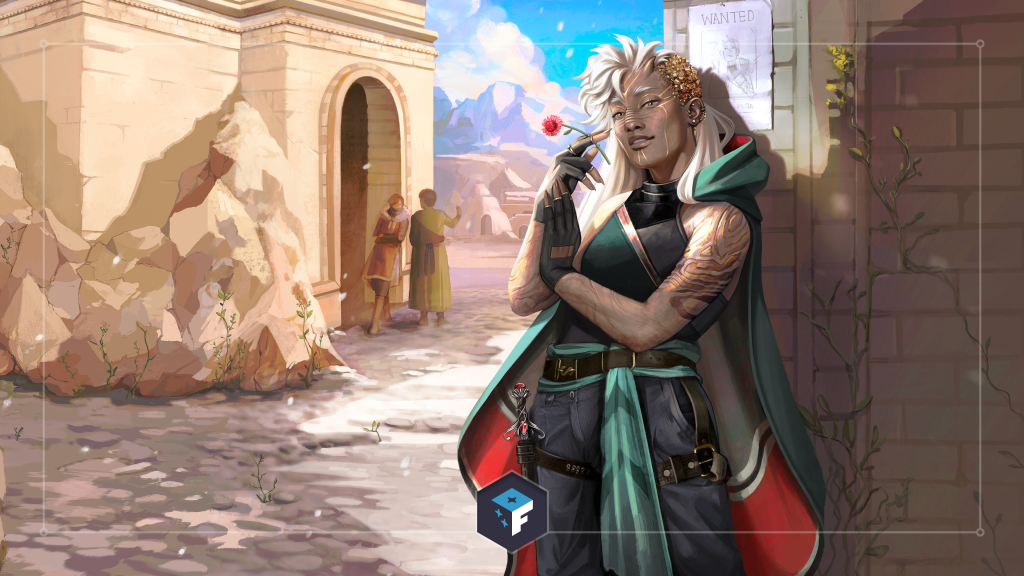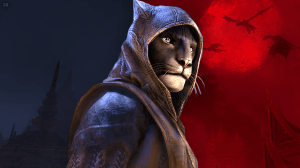The interest in tabletop gaming continues to rise as years come and go, and with more gamers turning toward tabletop gaming than ever before the number of games released under the format continues to grow as well – and not just in the traditional “true” tabletop sense. An upcoming release from developers Riftweaver brings tabletop role-playing games to the digital format, expanding the accessibility of the hobby further by offering prospective players intimidated by a pen-and-paper tabletop experience a concise and intuitive game to introduce them to the hobby or help them further develop their love. ComicBook was invited to play a bit of Riftweaver’s Tales of Fablecraft with CEO and co-founder David Hohusen, lead writer Claire Purcell, and Brad Hilderbrand, which was followed by a Q&A session to further discuss the game’s features.
Videos by ComicBook.com
“The goal has always been to be an entry point into the hobby,” Hohusen shared during our Q&A time. “If you’ve never played a game, or even if you don’t really even know what it’s about and you’ve only got some sort of an idea through Stranger Things or Critical Role and buying a $50 book is inaccessible to you – which is a reason we’re free-to-play – you can just check it out through our game.”
If you’re curious about tabletop gaming, as Hohusen points out in his comments, free-to-play Tales of Fablecraft is a fantastic introduction. With over a decade of tabletop experience at this point in my life and a lover of a Dungeons & Dragons game night around the table with my party furiously scribbling away notes about their characters before the session has started, there are a lot of aspects to Fablecraft that inspire that comfortable feeling of familiarity despite the digital format. Having your party on the screen with you with video and audio options fully delivers on that party feeling, seeing and hearing the dice roll across the screen gave me the warm fuzzy feeling that only the sounds of dice can deliver, watching the Game Master set the board for combat – it’s tabletop at its core and this is communicated in every aspect of the game.
Only with a digital format, Riftweaver can improve upon tabletop gaming and offer a more organized experience. Having art for changing landscapes accessible in the Game Master Guide, images of the characters and creatures the players will interact with, and all backed with a beautiful soundtrack are just some of the features that I feel add to the experience overall. It’s an intuitive game that encourages creativity and still provides players with everything they need to be properly introduced to tabletop gaming – as for Hohusen’s point about the goal being to create an entry point into the hobby, I feel Riftweaver has fully succeeded in doing so, and I only have about an hour of time in the game.
“The constant question that I feel like we’ve been asking ourselves is ‘What problem are we trying to solve?’” Purcell added to Hohusen’s comments regarding the goal of Fablecraft. “We have to look at how we can solve those problems in an intelligent way in terms of what digital tools we can build and create, and also solving them in a very human way. From a storytelling point of view, the chaos of trying to remember everything in a big physical campaign book is hard for anybody. Our Game Master Guide tells people what they need to know right now – a huge consideration is ‘What do people need to know and when do they need to know it?’ We’ve used lots of different ways to have the information readily available when the GM might need it and to try and anticipate as many points as we can so they can have the extra context there without having to read and memorize a bunch of information.”
The Game Master Guide (GMG) is a definite highlight for the game, and a sentiment I expressed to the team during our time together is that I feel Tales of Fablecraft offers a fantastic “training tool” for potential future Game Masters (GMs). We spent a good chunk of our time together going over the GMG to dive into the functions it offers and how it supports not only the players’ experiences but the GMs as well, providing enough context so the GM doesn’t feel lost but not so much to completely take away the natural creative opportunities presented by being in this role. Afterall, this is a digital tabletop game, and creativity is encouraged – GMs will have ample opportunity to be quick on their feet…unlike my Rogue character during our preview that failed an agility role that resulted in her tripping over a stick and landing facedown in the mud right in front of a group of enemies, courtesy of Hohusen’s own GMing talents.

I’ve already mentioned the bonus of having visuals to go with the tabletop experience, but it would be a massive disservice not to dive further into this aspect. The art for locations, characters, and creatures alike are all – to try to put it in a single word – stunning. Every design delivers in part what you’d expect to see in a fantasy genre release while imbuing it with the original style of this particular game. There are familiar elements, but Fablecraft sets itself apart by maintaining a vibrancy in color throughout its locations and characters, the eye drawn naturally to pops of color. The vibrancy of Tales of Fablecraft is a point I mentioned intentionally during the Q&A session, as it stands out as something different in a fantasy genre that has consistently turned toward darker aesthetics and themes in recent years.
“In the very beginning we wanted to make that distinction,” Hohusen notes regarding the art style of Fablecraft. “It was very intentional. We wanted the game to be bright and hyper-saturated. We didn’t want to lean into the ‘grimdark.’ When we were designing the look and feel, we wanted it to be a source of fun and inspiration, and not bleak. That said, I do think that can turn some folks off. On our Discord, for example, a lot of these folks who are interested in those darker experiences are using the homebrew tools to create necromancers, to create undead minions – to create the experience they want to have.”
“We really don’t take ourselves too seriously from the mood perspective,” Purcell continues. “There’s so much room for humor and silliness. One of our adventures has some real ridiculous moments, and that’s a check in the approachability box to lightly show people they don’t have to have everything be perfect when they jump in. You can goof off with your friends and have a great time. But from a storytelling point of view when there are more serious and emotional moments they really land – they’re reminders that we’re going through some trauma together.”
While I haven’t had enough time in Tales of Fablecraft to take a definitive stance toward the story, what I’ve seen so far has me intrigued enough to already be assembling a group to experience the three adventures with in full. Outside of the narrative, however, what has made me completely besotted toward Fablecraft are the characters. Not only are there creatures and monsters with some of the coolest visual designs I’ve had the pleasure of seeing in video games, but the humanoid characters have also won me over in mere seconds after meeting them. Earlier in this article the team allowed me to include a photo of the Bone Collector, who when I saw this photo during our tour of the GMG I became instantly enraptured – Riftweaver can almost certainly expect to see a tattoo of them on my body in the future. It’s an original design that feels like something pulled out of a cryptid story I could’ve been told while growing up. I haven’t experienced the Bone Collector in-game yet, but I am greatly looking forward to the day that I do.

Turning my attention back to the humanoid characters, I met only a couple in my travels so far, but Purcell has already earned a lot of admiration out of me for how endearing they are thus far. Kai and Dandelion were lovely to speak with briefly, but the standout for me thus far has been Cali (who you can see above thanks to another image from Riftweaver that I’m definitely not already planning to print and hang on the wall in my office…). Cali has such a gorgeous design and is incredibly smooth – I’m very much so looking forward to learning more about her in the future.
Overall, I was excited about Tales of Fablecraft before the demo and spending time with the team, and now I’m even more excited than I was before…and maybe even a bit (a lot) impatient. As one of my true joys in life is helping introduce people to tabletop gaming, I’m already convinced that what Riftweaver has already crafted will be a tool I’m more than happy to use in the future to do so, and I myself look forward to using the game to get back into being a Game Master. Added to the fact I think Riftweaver has done an excellent job at translating tabletop gaming into the digital space, the designs and aspects I’ve already seen from the original content for Tales of Fablecraft have me sufficiently eager to experience what the adventures have to offer in full.








